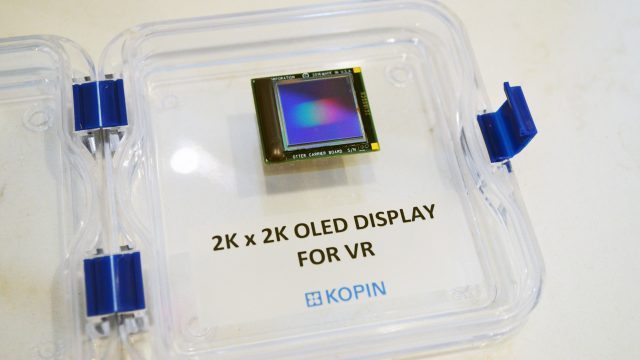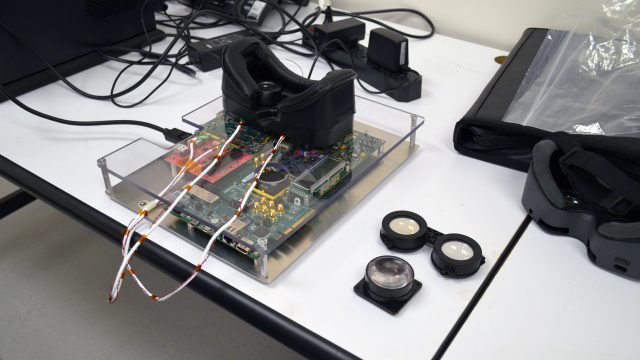After we went hands-on with Kopin’s prototype headset featuring their 2K VR micro display last week, people are curious to know when the screens might actually hit the market. Speaking with Kopin and manufacturing partner Goertek, the companies tell us that the first products incorporating the ‘Lightning’ display are expected by the end of 2018.
We explained in our hands-on that although functional, the Kopin ‘Elf’ headset isn’t a consumer product but actually a demo for the company’s 2K 120Hz Lightning display:
One important thing to remember is that Elf headset is not going to become a product, it’s simply a pitch for Kopin’s VR microdisplays and Goertek’s manufacturing capabilities. The company’s hope is that a consumer electronics company will want to produce a product based on the Lightning display, and the Elf headset is the demo to sell them on the form-factor that it enables. Goertek says that the companies are “actively marketing” the Elf headset to potential consumer electronics companies. That means that an end product containing Kopin’s Lightning display might end up looking quite a bit different than the Elf headset today. In fact, although Elf is tethered, Kopin says that the foundation of the headset is also suitable for all-in-one mobile VR headsets.
Speaking with Goertek—Kopin’s partner and one of the manufacturers behind the Oculus Rift and PSVR—at the company’s Silicon Valley office, I was told that the first products to launch with the Lightning display are expected toward the end of 2018, which puts products around five quarters away.

Part of the gap between now and then is finding partners who are convinced by the Elf headset demo and decide to build a product based on the components; Kopin and Goertek are in the process of demonstrating the headset to a range of companies.
The big pitch for the Elf headset is its impressively compact size and diminutive weight; the prototype I tried was just 220 grams, less than half the weight of the Rift and Vive (though to be fair it’s just a demonstration of the display, and lacking some extra hardware found on most headset). And of course it’s backed by the incredibly sharp 2K Lightning display which has more than three times the pixels of today’s leading headsets, and a whopping 120Hz refresh rate (though, as I found in my hands-on, those benefits may come at the cost of a lower field of view).
Another reason for the delay is that the display and the lenses are still in active development; it will be some time yet until Kopin is pumping them out at manufacturing quantities. The companies expect that in 2019 they would have the manufacturing capacity to create some 5 million headsets.

Before that time though, there’s still a few kinks for Kopin to work out. For one, depending upon which optics they use, the display needs to be brighter. They told me that they expect to be able to double the brightness by the time they begin shipping displays, but it isn’t clear if they’ll have enough brightness to enable low-persistence, a key technique for reducing blur as users turn their heads in the virtual environment. The company also showed me three different lenses, each of a different design and offering a different field of view, though they’re still in development as well.
One big question for Kopin is whether traditional display manufacturers will be able to ship next-gen VR displays ahead of the Lightning display, potentially offering another route to bringing greater pixel density to VR headsets. For instance, Samsung demonstrated a new 2K VR display back in May, though it isn’t clear when they’ll be ready to sell the part to headset makers.
In the long term, Kopin and Goertek say they’re investing $150 million to create a new display fabrication plant which will enable them to make larger and higher resolution VR micro displays. According to the companies’ roadmap, they’re aiming to make a 1.3-inch 3K display followed by a 1.37-inch 4K, in due course.







